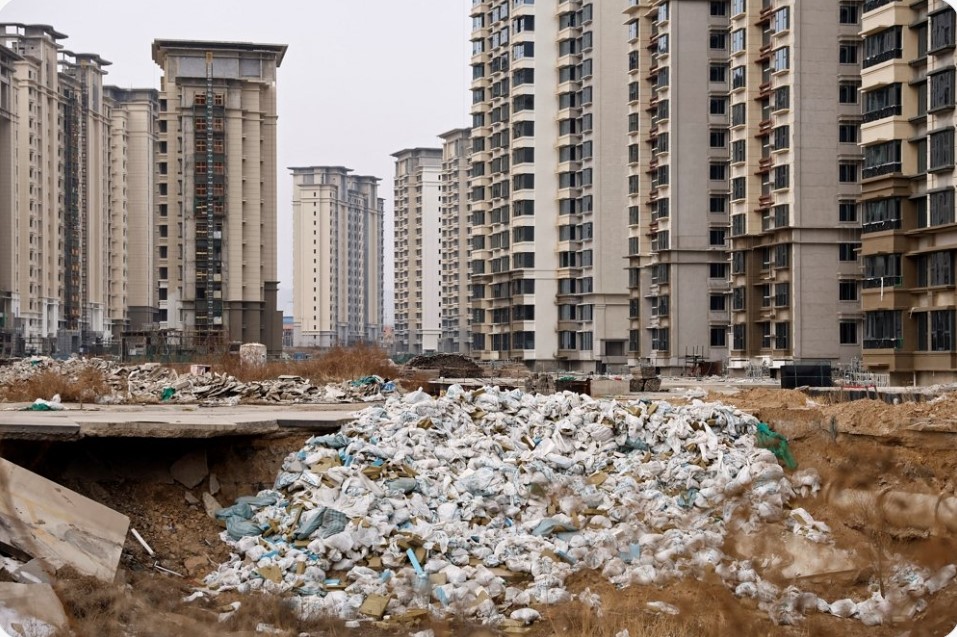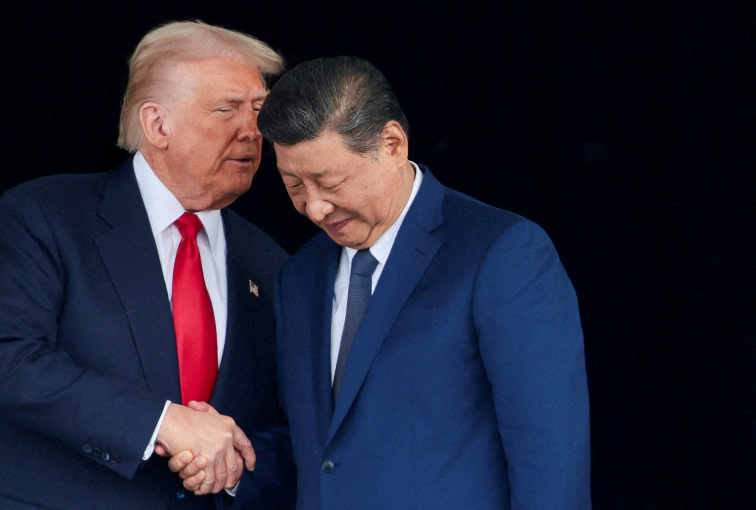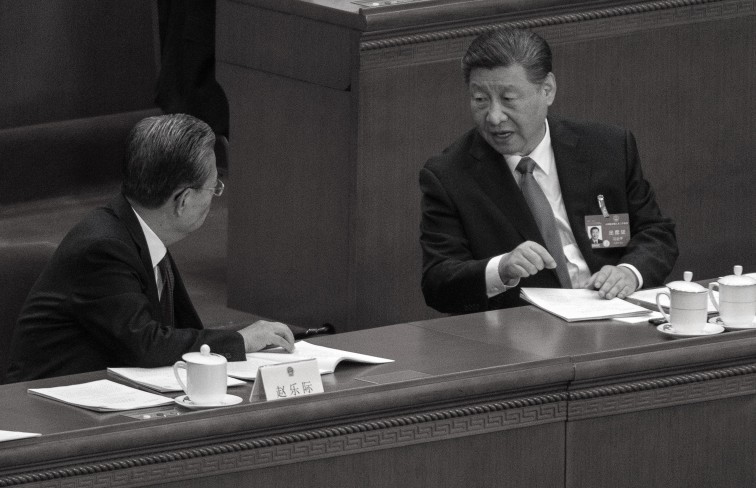[People News] On November 5, EU Trade Commissioner Maroš Šefčovič announced that he had repeatedly discussed rare earth supplies directly with China’s Commerce Minister Wang Wentao. He said the EU has established a “special channel” for communication with Beijing to ensure stable rare earth supply, emphasizing that any mismanagement of export procedures could have “very negative consequences” for Europe’s production and manufacturing industries.
Šefčovič noted that since Beijing’s new export controls took effect, European companies have submitted about 2,000 applications, more than half of which have been approved. Brussels continues to urge Beijing to process the rest more quickly while simultaneously seeking diversification of supply—including rare earth and magnet production within Europe, such as projects in Estonia.
But this raises a crucial question: Why does the CCP wield such global leverage with rare earths? What exactly are rare earth elements, and how did they become China’s “ace card”?
In 1794, Finnish chemist Johan Gadolin isolated the first rare-earth compound, yttria (Y₂O₃), from a heavy, tar-like mineral. At that time, only a few such minerals were known, and they could only be separated chemically in small quantities. These insoluble oxides were called “earths,” giving rise to the term rare earths.
The 17 rare-earth elements include:
Lanthanum (La), Cerium (Ce), Praseodymium (Pr), Neodymium (Nd), Promethium (Pm), Samarium (Sm), Europium (Eu), Gadolinium (Gd), Terbium (Tb), Dysprosium (Dy), Holmium (Ho), Erbium (Er), Thulium (Tm), Ytterbium (Yb), Lutetium (Lu), Scandium (Sc), and Yttrium (Y).
-
Light rare earths: La, Ce, Pr, Nd, Pm, Sm, Eu
-
Heavy rare earths: Gd, Tb, Dy, Ho, Er, Tm, Yb, Lu, Y
Heavy rare earths are indispensable in aerospace, defense, and advanced materials, are more expensive, and have few substitutes.
China’s southern provinces—notably Jiangxi (Ganzhou), Guangdong, and Guangxi—contain over 90% of the world’s heavy rare-earth reserves, primarily in ion-adsorption clays.
Globally, rare earths are applied across virtually every industrial sector:
-
Magnets (25%)
-
Catalysts for petroleum cracking (22%)
-
Metallurgy & alloys (18%)
-
Polishing materials (14%)
1. Military Applications
-
Dysprosium (Dy) and Terbium (Tb): strengthen neodymium-iron-boron magnets to withstand high temperatures; used in EV motors, wind turbines, and missile guidance systems.
-
Europium (Eu) and Terbium (Tb): essential for phosphors, LCDs, and lasers.
-
Lutetium (Lu): used in PET scanners, optical crystals, and high-end aerospace optics.
These materials are irreplaceable in the defense industry.
2. Metallurgical Industry
Light rare earths such as La, Ce, Nd, Sm act as deoxidizers and desulfurizers in steelmaking and are used in ductile iron and magnesium alloys.
Heavy rare earths such as Dy, Tb, Gd, Lu, and Y provide high-temperature magnetism, corrosion resistance, and heat strength, vital for superalloys, permanent magnets, and reactor materials.
For instance, Dysprosium (Dy) is crucial for enhancing the Curie temperature and demagnetization resistance of NdFeB magnets—key components in EVs, wind turbines, and aircraft control systems.
3. Petrochemical Industry
Rare earths act as catalysts in petroleum refining, cracking, and emission purification. Light rare earths—La, Ce, Pr, Nd—are the main elements used in refining catalysts and exhaust treatment systems.
4. Glass and Ceramics
Light rare earths enhance optical clarity, mechanical strength, and heat resistance:
-
Cerium (Ce): polishing powders, UV-absorbing glass, and display screens.
-
Lanthanum (La): improves refractive index—used in camera lenses and telescope optics.
-
Neodymium (Nd): gives glass a purplish tint and serves as laser material.
Global Supply Landscape
According to the U.S. Geological Survey (2018), the world’s rare-earth reserves total 120 million tons—enough for roughly 1,000 years of extraction. So rare earths aren’t truly “rare,” but their distribution is highly uneven:
-
China: 44 million tons (37%)
-
Brazil: 18%
-
Vietnam: 18%
-
Russia: 15%
-
India: 6%
-
Australia: 2%
-
U.S.: 1%
Production (2024)
-
China: 270,000 tons
-
U.S.: 45,000 tons
China is the largest producer but also imports raw materials from neighboring countries.
-
Myanmar: 31,000 tons (China relies on Myanmar for 70% of its medium and heavy rare-earth feedstock, especially Dy and Tb). However, in late 2024, the Kachin Independence Army seized two towns near China’s Yunnan border—key rare-earth supply hubs—disrupting Beijing’s access.
-
Thailand: 13,000 tons—another major supplier to China.
-
Nigeria: 13,000 tons.
-
India: 2,900 tons (ironically imports from China).
-
Vietnam: 300 tons (cooperates with China on mining).
-
Australia: 13,000 tons—home to Lynas Rare Earths, the largest producer outside China, specializing in heavy rare earths like Tb and Dy.
-
Russia: 2,500 tons—Putin told Trump in early 2025 that Moscow seeks cooperation in the rare-earth sector.
-
Madagascar: 2,000 tons, with 6.28 billion tons of ion-adsorption clay rich in Dy, Nd, and Eu—one of the world’s biggest reserves outside China.
Why the CCP Can Still Blackmail the World
China doesn’t just mine rare earths—it controls the entire global supply chain: from extraction to refining to manufacturing. It remains the only country in the world with a fully integrated rare-earth industrial ecosystem, from raw ore to finished high-tech components.
This vertical monopoly—combined with China’s dominance in heavy rare-earth refining and magnet manufacturing—gives the CCP enormous geopolitical leverage.
Even as Beijing selectively “opens” rare-earth exports to Europe, its control over the processing bottleneck ensures that the world remains vulnerable to supply manipulation.
That is why, despite abundant global reserves, the world can still be held hostage by Beijing’s rare-earth power.
(First published by People News) △










News magazine bootstrap themes!
I like this themes, fast loading and look profesional
Thank you Carlos!
You're welcome!
Please support me with give positive rating!
Yes Sure!